Typically, turnips don’t exactly exude confidence.
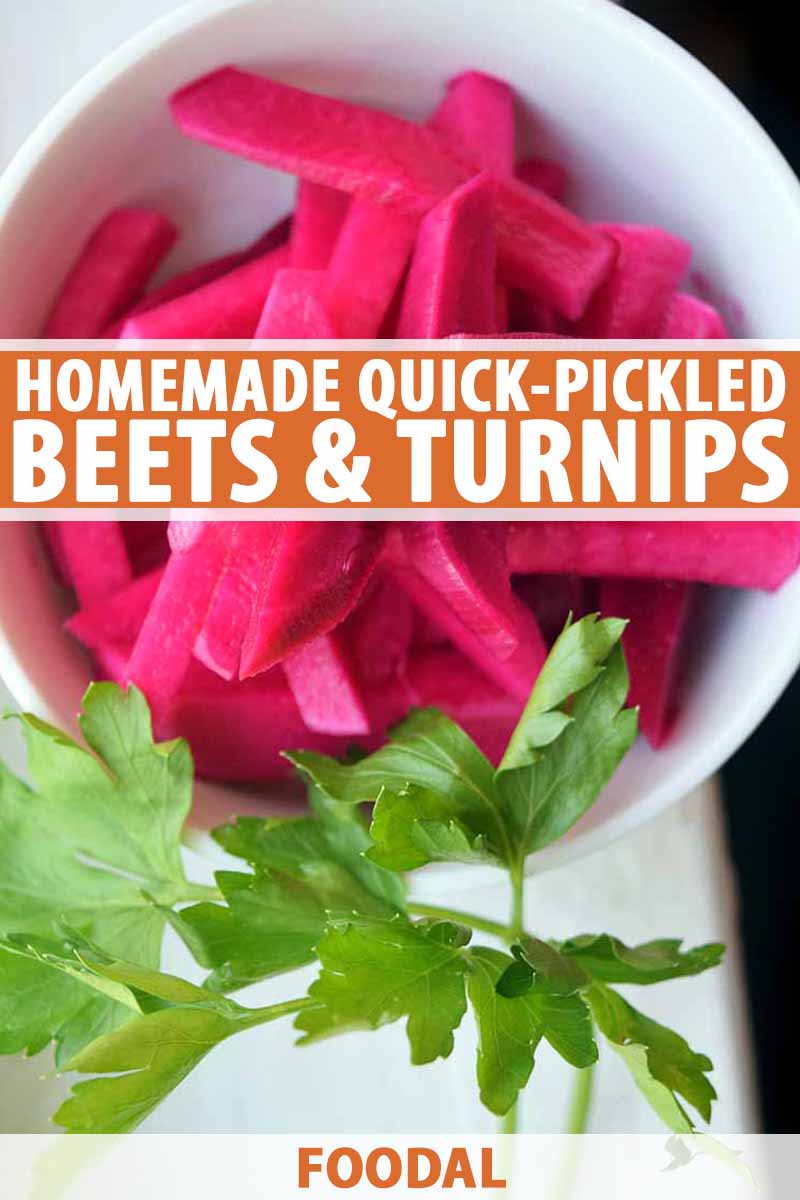
They’re an oft-forgotten root vegetable that’s primarily recognized for not having much flavor.
That’s not really the reputation you want.
But I’d like to change that.
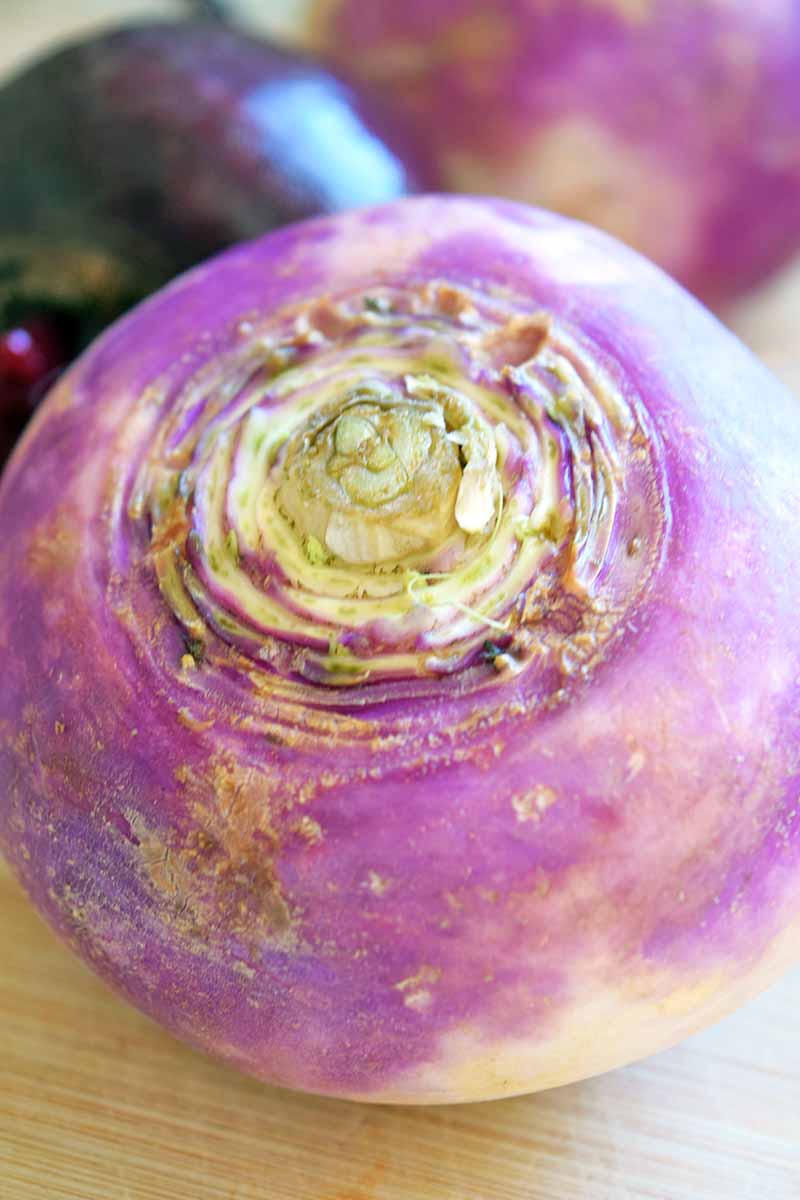
I’m aware that if you’re not a big fan of root vegetables to begin with, I probably can’t transform turnips into the love of your life. But when you experience a pickled turnip for the first time, one that’s been permeated with the crimson color of a beet, you might start to see them in a new light.
Pickled condiments are a staple in many different types of cuisine. Let’s explore, shall we?
We’ve got Lebanese-style (like today’s featured recipe) that tucks in beautifully to a meaty gyro. There’s giardiniera – an Italian relish medley of pickled vegetables in vinegar or oil that gives life to beefy hoagies.
I recently even spotted pickled green beans and pickled baby carrots on an elegant charcuterie platter at a Spanish tapas spot.
But for right this second, I’d like to discuss the OG from my childhood: the dill pickle.
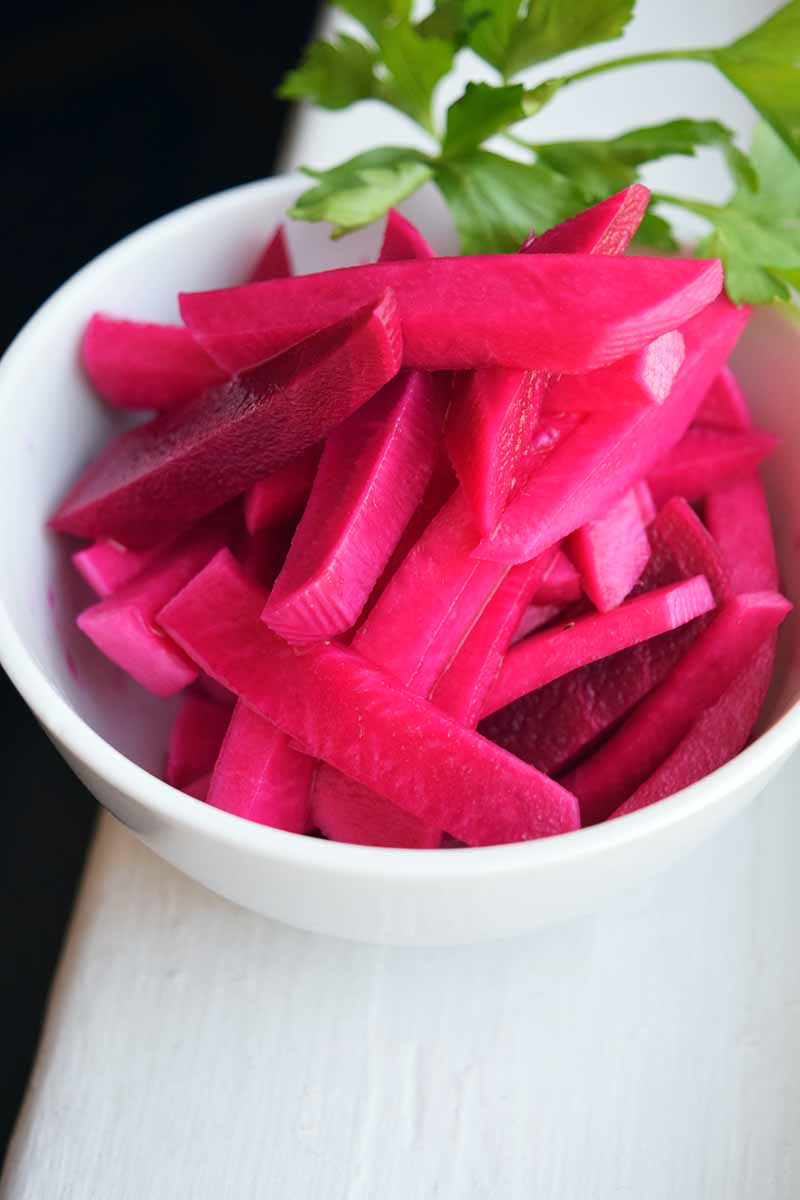
Okay, technically it’s a pickled cucumber, but you get where I’m going with this. I’ve always had a thing for pairing fried, salty food with cold, crunchy pickles.
I have hundreds of upscale food memories from my younger years (like fresh, tomatoey bouillabaisse prepared oceanside…) thanks to being raised by parents who were quite the epicureans.
But no matter how much my dad instilled in me the art of scratch-made cooking featuring fresh herbs and my mom begged me to try her rainbow chard, I still couldn’t get enough Applebee’s.
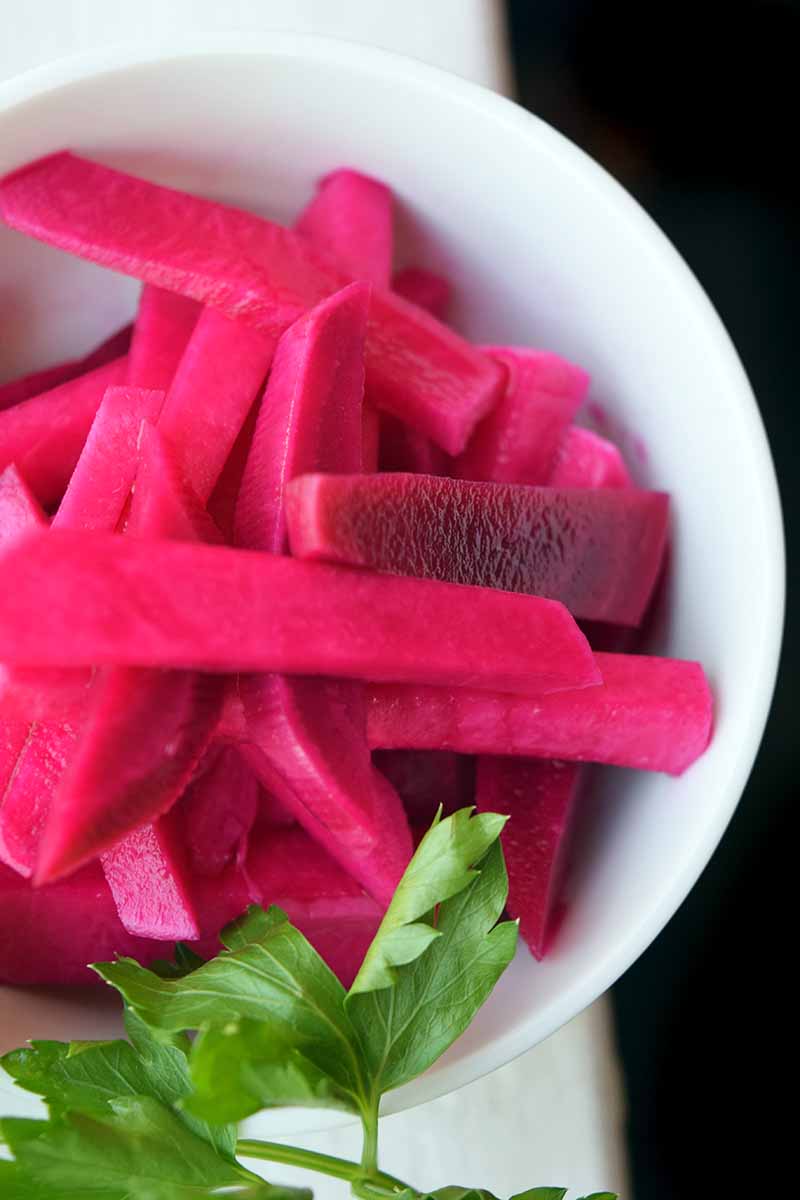
I know. It’s a miracle I ended up in the culinary industry.
I like to think that my relentless love for this American neighborhood grill was actually an exploration in understanding how flavor contrast and balance work.
This is clearly the gourmet in me speaking.
I know that this chain, though a delightfully affordable family-friendly franchise, isn’t exactly known for their artisanal abilities in the kitchen. But I can still taste the crispy tenders from that chicken finger basket paired with chilled briny pickles like it was yesterday.
(And it definitely wasn’t yesterday. I had my sixteenth birthday party there, and that was many moons ago.)
I remember that I couldn’t share a seasoned pile of french fries with friends without asking for my beloved sidecar of ridged pickles. It was as if I knew that my future self was going to become a professional cook, and I was implanting culinary nuggets (like balancing acidity with fat) into my teenage brain.
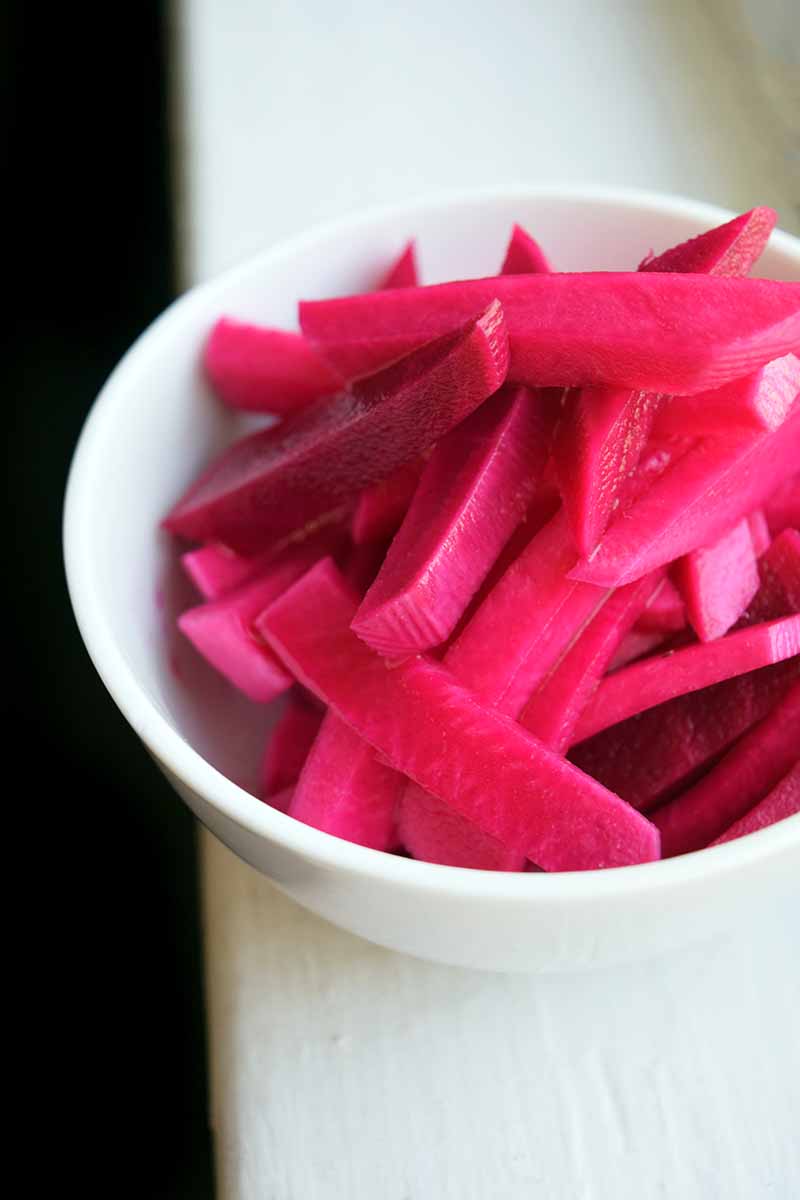
Now, as an adult, I slide all kinds of pickled veggies into anywhere that I want to infuse with a bit of magic.
And by magic, I mean crunchy tartness.
These pickled beets and turnips are a game-changer when it comes to flavor, but color is another key feature. As the hot brine gets washed over the veggies, a few cloves of garlic, and the fiery red chili, the beets release their energetic shade into the turnips.
Suddenly, the once-bland turnips are literally “turnt up.”
The result: thick, rosy matchsticks that are addictively salty, gloriously garlicky, a touch sweet, and delicately hot.
You can slip them into souvlaki, toss them with greens, or take them to Applebee’s for a hot date.
No judgement here.
Print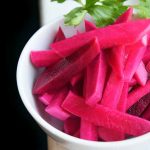
Homemade Quick-Pickled Beets and Turnips
- Total Time: 24 hrs, 25 minutes
- Yield: 2 quarts 1x
Description
Got a recipe that’s missing a bright touch of tartness and sassy tang? These crunchy pickled beets and turnips are your ticket to flavor.
Ingredients
- 1 cup white vinegar
- 3 cups water
- 1/3 cup coarse salt
- 1 tablespoon granulated sugar
- 2 dried bay leaves
- 2 pounds turnips, peeled and cut into thick matchsticks
- 1 small red beet, peeled and cut into thick matchsticks
- 3 medium garlic cloves, thinly sliced
- 1 small red chili, halved with seeds discarded
Instructions
- In a medium saucepot over high heat, add the vinegar, water, salt, sugar, and bay leaves and bring to a boil. Whisk until the salt has dissolved, about 1 minute.
- Place the turnips, beets, garlic, and chili into 2 32-ounce glass jars with tight-fitting lids. Pour the vinegar mixture over the vegetables, leaving about ½ inch of space at the top.
- Cover the jars with lids and allow the pickles and their liquid to cool slightly. Refrigerate for at least 1 day. Pickles will keep in the fridge for up to 1 month.
Notes
Note that the nutritional info below includes the brine, most of which you will actually drain.
- Prep Time: 10 minutes
- Cook Time: 15 minutes
- Category: Vegetables
- Method: Stovetop
- Cuisine: Pickles
Keywords: pickles, pickled beets, pickled turnips, beets, turnips
Cooking By the Numbers…
Step 1 – Peel and Chop Vegetables
Trim the root ends and tops off of the beets and turnips, and then peel them with a vegetable peeler. If you bought the beets with the greens still attached, don’t throw them out! Saute them with garlic for a delish side.
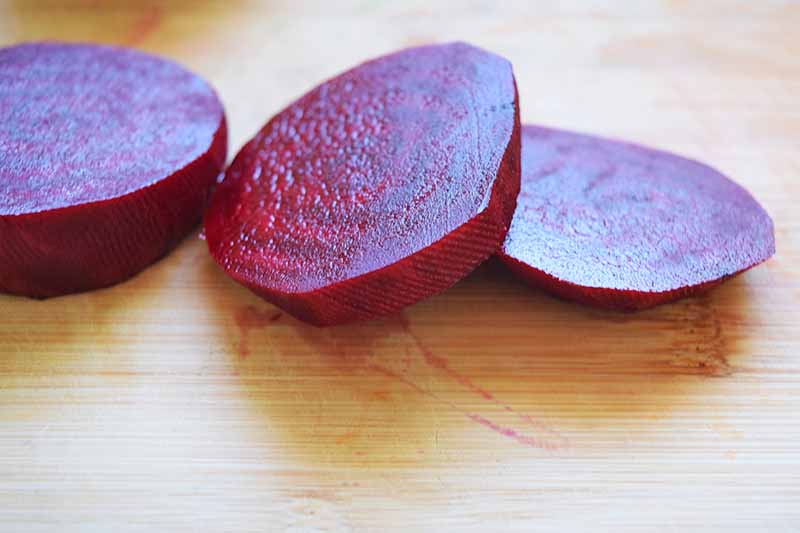
To slice them into matchsticks, place the end side flat on a cutting board.
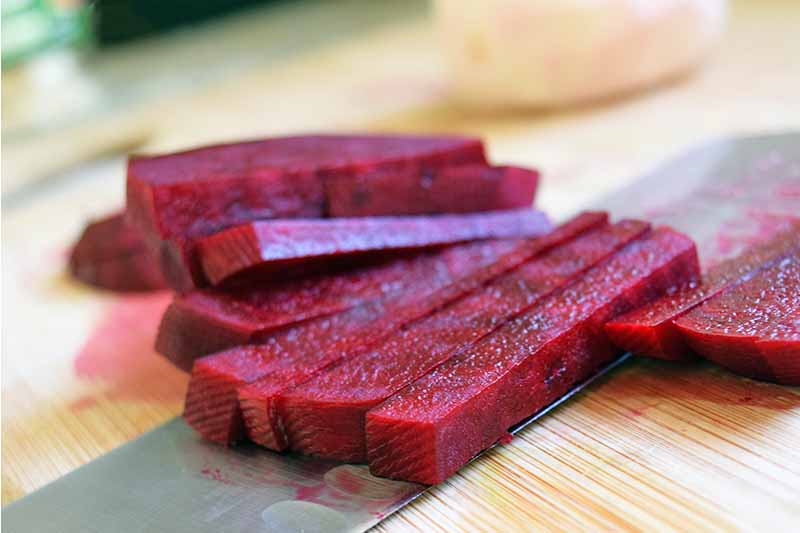
Slice into flat slices that are ½ inch thick.
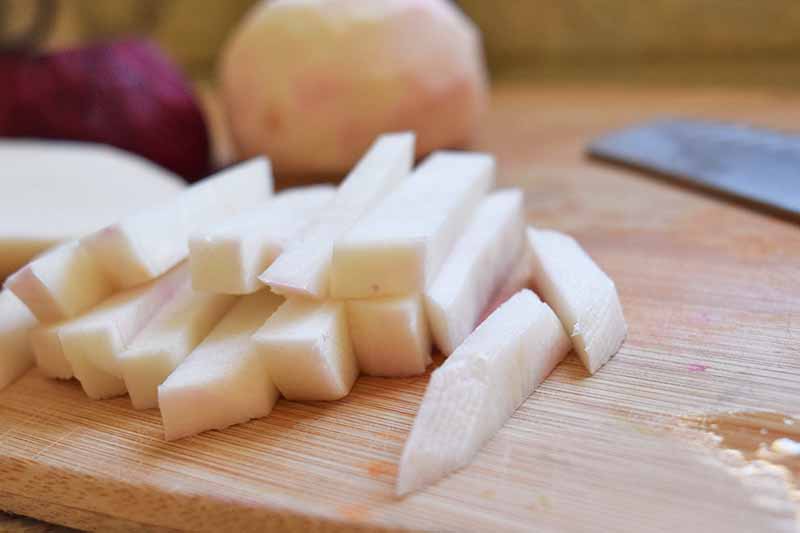
Stack several slices at a time, and then slice lengthwise into fat sticks.
Step 2 – Make the Brine
In a medium saucepot over high heat, add the vinegar, water, salt, sugar, and bay leaves and bring to a boil.
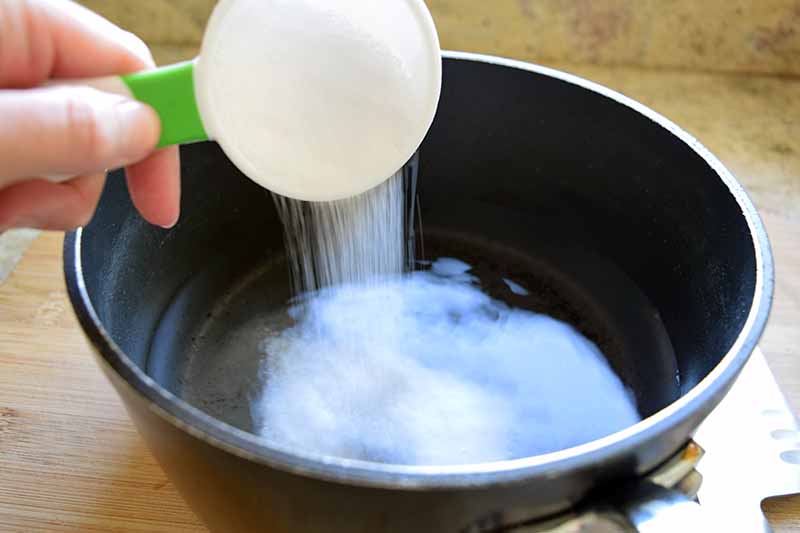
Whisk until the salt and sugar are dissolved, about 1 minute.
Step 3 – Pour the Brine over the Veggies
Thinly slice the garlic.

Slice the red chili down the middle, and remove the seeds.
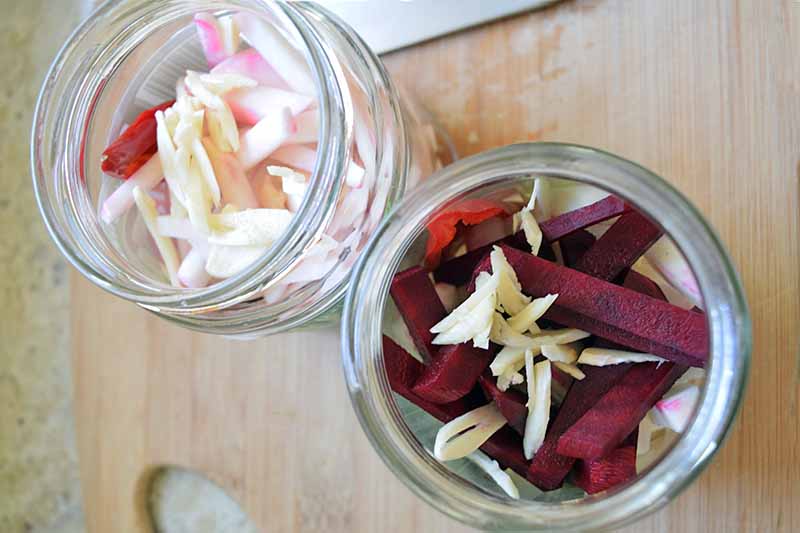
Place the turnips, beets, garlic, and chili into glass jars with tight-fitting lids. I used two 32-ounce jars for this recipe.
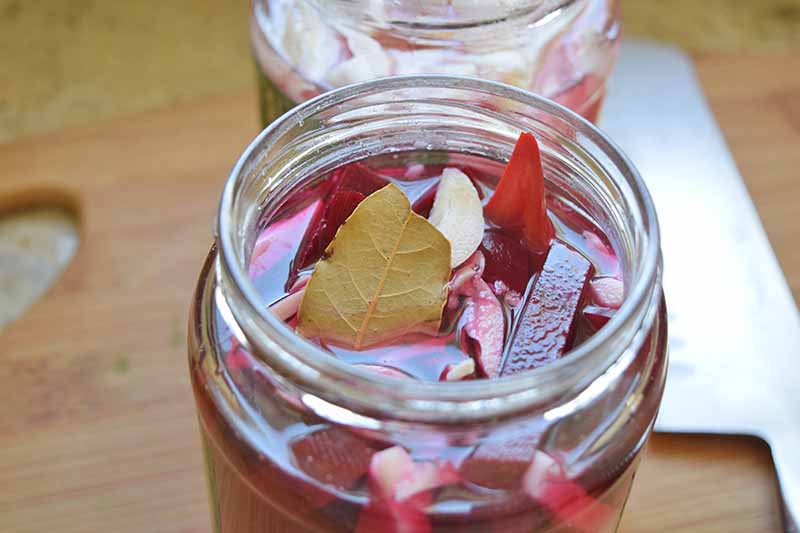
Pour the vinegar mixture over the vegetables, leaving about ½ inch of space at the top.
Step 4 – Cover and Refrigerate
Cover the jars with lids and allow the pickles and their liquid to cool slightly. Refrigerate for at least 1 day before enjoying.
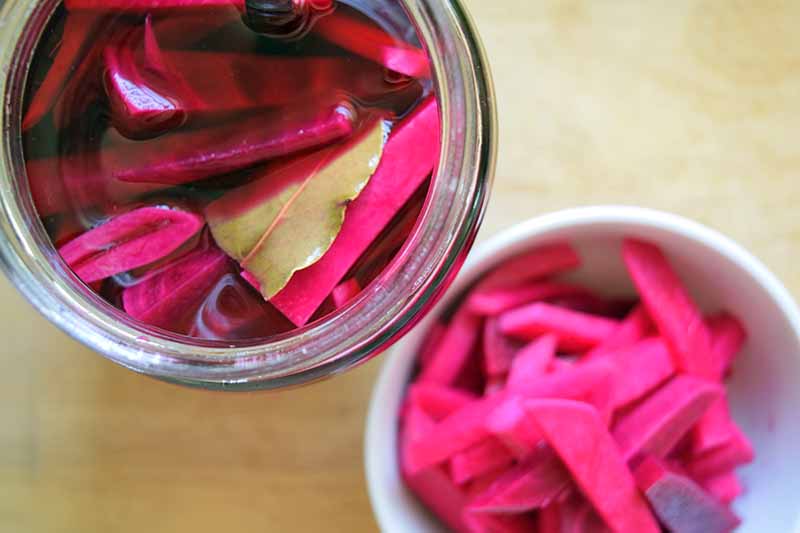
Pickles will keep in the fridge for up to 1 month.
It’s a Pickle Party, and You’re Invited
On a scale of one to fabulous, these cool, crisp, crunchy condiments that you can sneak into any meal tip the scales towards awesome every time.
Anything you can think of with a savory bite will make an ideal landing zone for these turnips and beets. I trickle them over breakfast tacos, pile them onto a hummus wrap at lunch, and load them into my dinnertime buffalo chicken salad.
Hungry yet? Same.
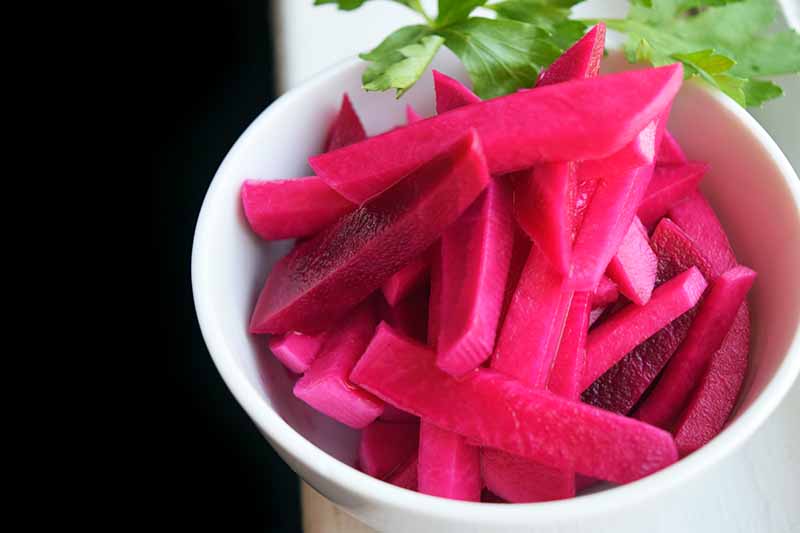
The pickling possibilities are endless. Here are some more ideas to try:
- Harvest Time: 6 Recipes for Great Tasting Preserves
- Bread and Butter Zucchini Pickles
- The Best Homemade Fermented Garlic Dills
How do you prefer your pickle brine? Brimming with fresh dill and garlic? Spicy and sweet? Share your salty secrets in the comments below! And don’t forget to give this recipe a five-star rating if you loved it.
Photos by Fanny Slater, © Ask the Experts, LLC. ALL RIGHTS RESERVED. See our TOS for more details.
Nutritional information derived from a database of known generic and branded foods and ingredients and was not compiled by a registered dietitian or submitted for lab testing. It should be viewed as an approximation.
About Fanny Slater
Fanny Slater is a home-taught food enthusiast based in Wilmington, North Carolina who won the “Rachael Ray Show” Great American Cookbook Competition in 2014, and published her cookbook “Orange, Lavender & Figs” in 2016. Fanny is a food and beverage writer, recipe developer, and social media influencer. She was a co-host on the Food Network series “Kitchen Sink,” was featured on Cooking Channel’s longtime popular series “The Best Thing I Ever Ate,” and continues to appear regularly on the “Rachael Ray Show.”

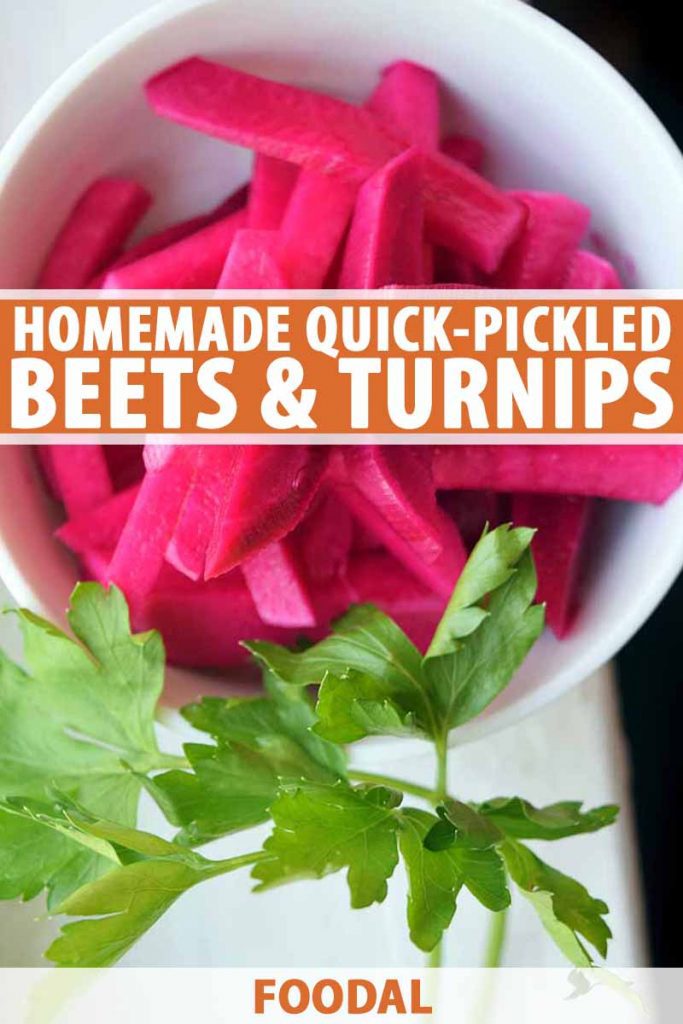
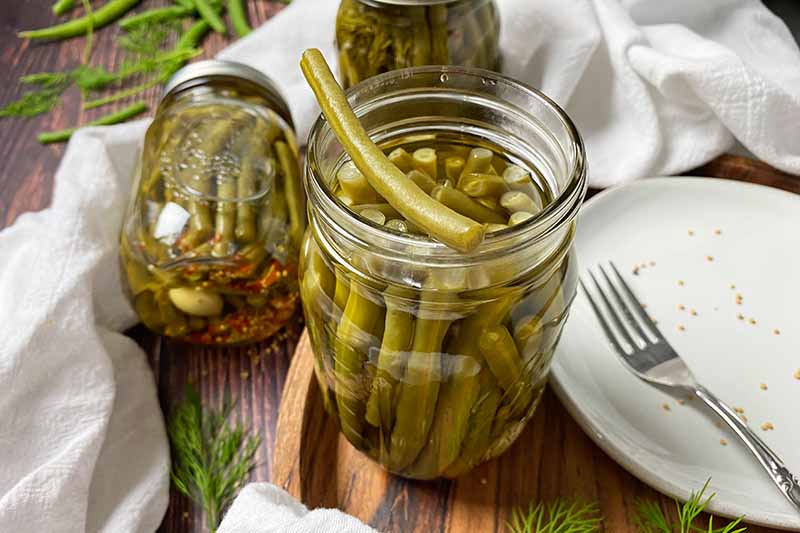
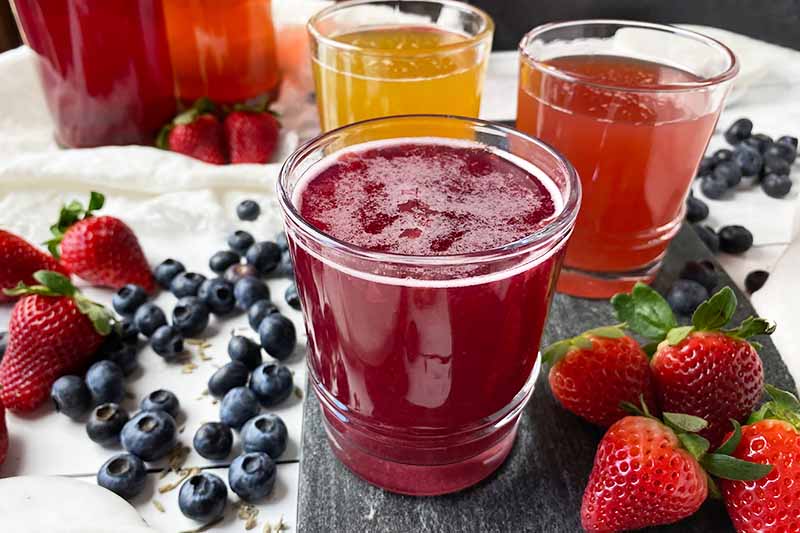
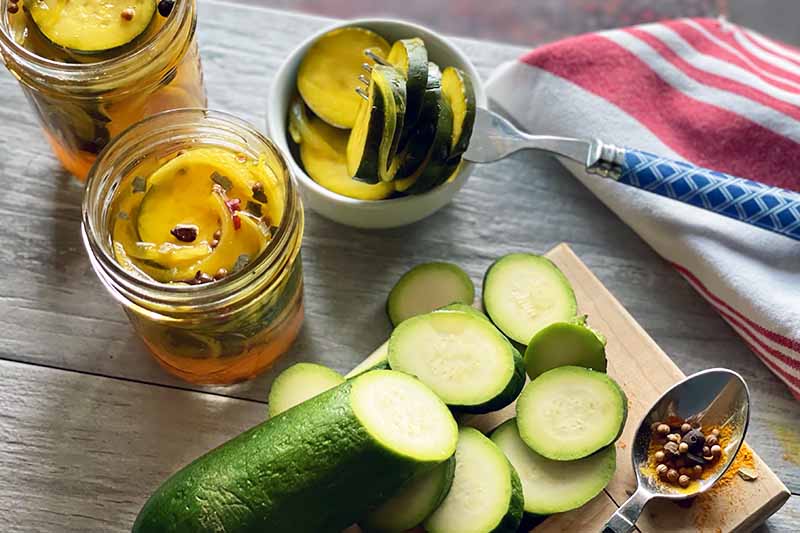
I don’t have any glass jars. Is it okay to use a different container, like the Rubbermaid Crystal Clear?
Yes, that’s fine! These are quick pickles, so you don’t need to create a seal like you would if you were canning a recipe for shelf storage outside the refrigerator.
Sound yummy but just to confirm:
Is the salt 1/3 c
And the sugar 1 T
Thanks!
Yes, these are the correct measurements for making the brine!
VERY salty end result, I’d suggest reducing the salt .. maybe even by half!
Hi.
Will this work on carrots as well?
Yes, this recipe should work nicely for a variety of root vegetables.
The salt in this is out of control. I would suggest 1 tbsp of pickling salt, maximum.
Can you use the plastic screw on jar lids on your canning jars for this recipe? How do you sterilize these jars and lids before putting your beets and turnips in them? Is a run through the dishwasher a suitable way to do that?
This recipe is for a quick refrigerator pickle, so it isn’t suitable for shelf-stable canning.
Submerging canning jars in boiling water for 10 minutes is the recommended rule of thumb, though some canning equipment does not require an additional sterilization step if processing takes more than 10 minutes. The dishwasher will clean jars, lids, and lid rings, but relying on your dishwasher for sterilization is not recommended.
Hope this helps!